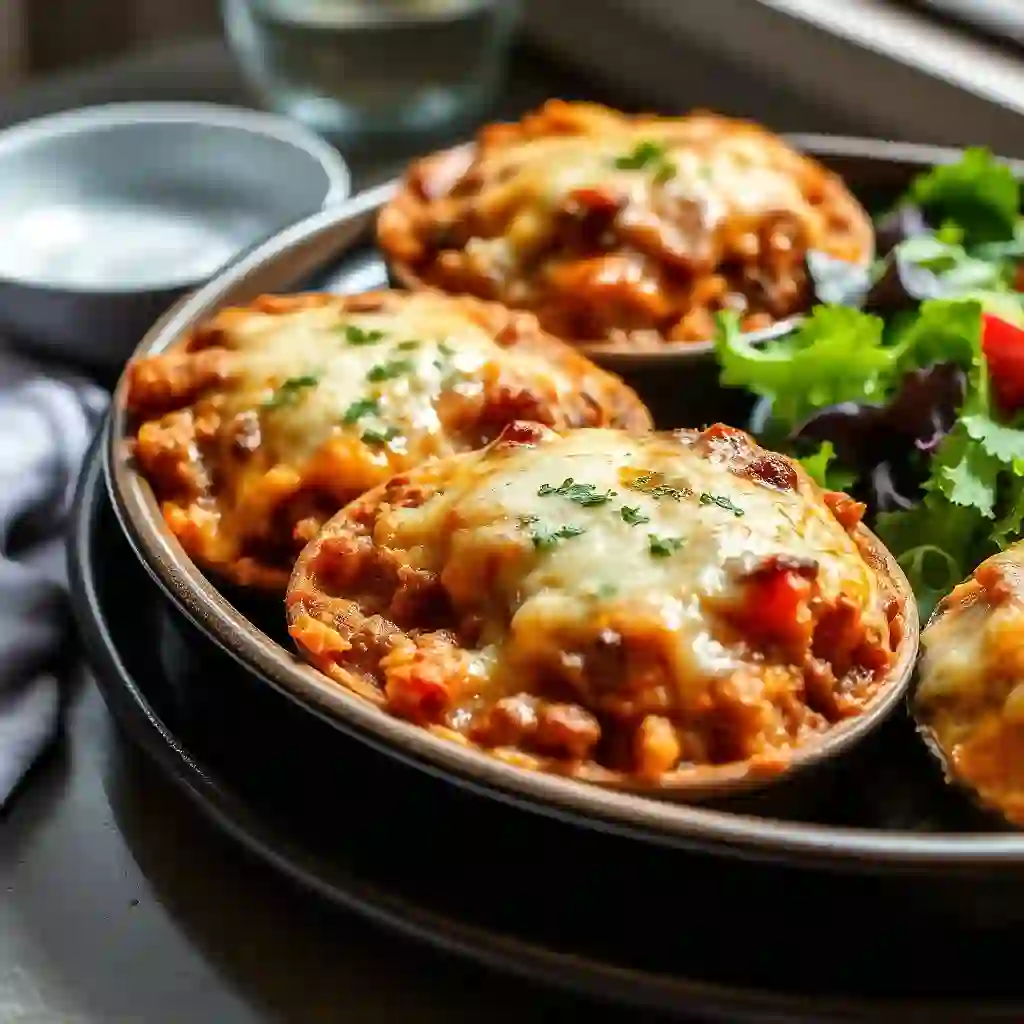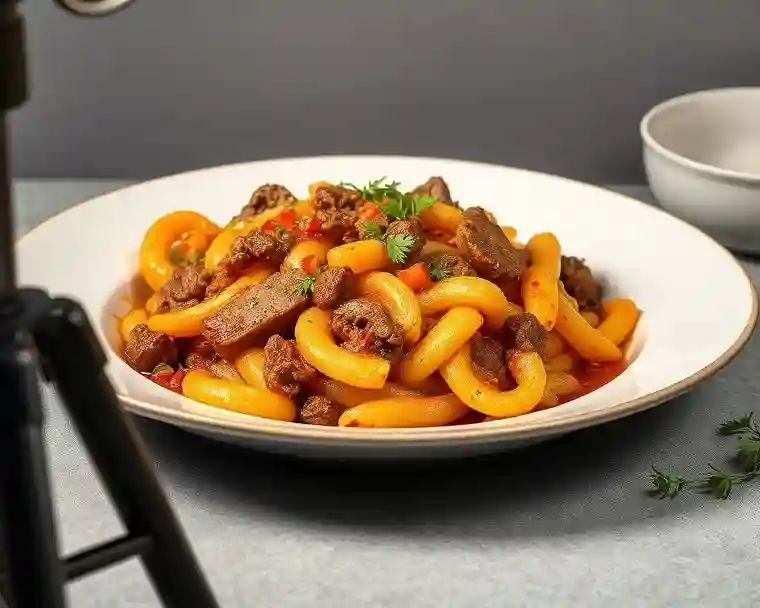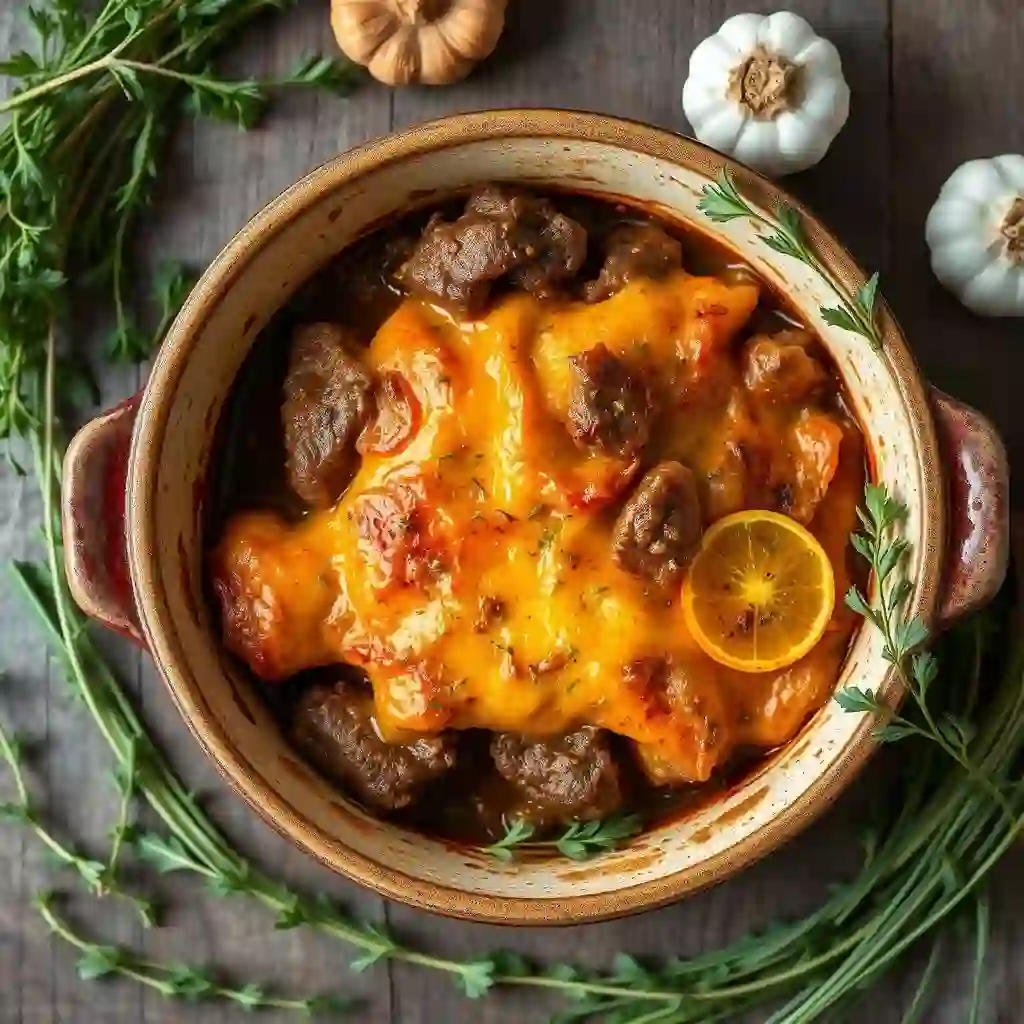Beef casseroles are the ultimate comfort food, Nothing says comfort food quite like a bubbling beef casserole pulled straight from the oven. Whether you’re feeding a hungry family, prepping meals ahead of time, or just craving something hearty, beef casseroles are incredibly versatile, satisfying, and budget-friendly.
In this article, we’ll walk through a full guide of beef casseroles content ideas from essential ingredients to creative twists, expert cooking techniques, health tips, and even how to make your recipes shine online. You’ll get inspired to cook, customize, and even blog your own mouthwatering versions.
Looking for inspiration? Try The Ultimate Green Bean Casserole Recipe Guide—a great starting point to master classic casserole techniques.
Let’s dive into the rich, cheesy, beefy world of casseroles.
Understanding Beef Casseroles
What Makes a Casserole a Casserole?
A casserole is more than just a one-dish meal—it’s a method of combining ingredients like proteins, veggies, starches, and binders (think creamy sauces or cheese) into a hearty bake. Traditionally baked in the oven, casseroles offer the perfect balance of flavor, texture, and warmth.
They’re cooked slow and low, allowing flavors to blend beautifully.
Casseroles are beloved in American households for a reason: they’re flexible. You can use leftover meats, frozen vegetables, pantry staples, or even pre-cooked grains to whip up a dinner that tastes like it took hours—even if it didn’t.
History and Evolution of Beef Casseroles
The word “casserole” comes from the French term for saucepan, but this humble dish has global roots. In the U.S., casseroles gained popularity during the 1950s when convenience foods like canned soup and instant rice became kitchen staples. Beef, with its bold flavor and satisfying bite, quickly became a go-to ingredient.
Over the decades, home cooks began experimenting beyond the basic beef-and-noodle combo. Today’s beef casseroles span global cuisines—think Mexican-inspired taco bakes, Italian beef lasagna casseroles, and even Asian-infused beef and rice bakes.
Each culture brings its own ingredients and methods, enriching the casserole landscape with endless content possibilities.
Open
Table of Contents
Essential Ingredients for Perfect Beef Casseroles
Core Components: Protein, Veggies, and Binders
Every great beef casserole begins with a solid foundation of three primary components: protein, vegetables, and a binder. These elements not only deliver nutrition but also create a satisfying texture and flavor in every bite.
1. Protein – The Star of the Dish
Ground beef, shredded roast, or steak tips are the most common choices. Ground beef is easy to cook and blends well with sauces and spices. For a heartier option, slow-cooked beef chunks provide a richer bite.
2. Vegetables – Flavor, Color, and Nutrition
Veggies like onions, bell peppers, peas, corn, green beans, carrots, and even spinach can add both crunch and nutrition. Roasted or sautéed first, they release deeper flavors and avoid becoming mushy during baking.
3. Binders – What Holds It All Together
Binders like cream of mushroom soup, sour cream, béchamel sauce, shredded cheese, or tomato-based sauces provide moisture and bind ingredients. They also help with that ooey-gooey consistency everyone loves in casseroles.
Here’s a quick reference table to guide your base:
| Component | Options |
|---|---|
| Protein | Ground beef, beef stew chunks, leftover roast |
| Vegetables | Onions, mushrooms, peas, corn, green beans |
| Binders | Cream soups, sour cream, tomato sauce, cheese |
Pantry Staples and Must-Have Additions
Smart casserole makers know their pantry is a goldmine. Here are essentials to stock for quick beef casseroles content creation:
- Dry Pasta or Rice: Choose egg noodles, penne, or long-grain rice.
- Breadcrumbs or Crushed Crackers: Adds a crunchy topping layer.
- Canned Beans or Corn: Boosts fiber and texture.
- Dried Herbs & Spices: Garlic powder, paprika, thyme, oregano, and rosemary are beef’s best friends.
- Cheese: Cheddar, mozzarella, Parmesan—melty, salty goodness is non-negotiable.
These additions give you flexibility to create dozens of unique beef casseroles just by mixing and matching. For example, a Tex-Mex twist might use black beans, taco seasoning, and shredded pepper jack, while an Italian version could feature tomato sauce, oregano, and mozzarella.
Discover great ideas like Meghan Markle’s Pasta Tips to bring celebrity-level style to your casserole bases.
With the right ingredients on hand, your creative possibilities are endless—and your content ideas practically write themselves.
PrintDelicious Beef Casseroles Content Ideas to Inspire Your Next Meal
Get the best beef casseroles content ideas with these 9 creative, hearty meal tips. Includes recipes, photography tips, and blogger strategies.
- Prep Time: 15 minutes
- Cook Time: 45 minutes
- Total Time: 60 minutes
- Yield: Serving 4–6 1x
- Cuisine: American
- Diet: Halal
Ingredients
- 1 lb ground beef
- 1 chopped onion
- 2 cups cooked pasta
- 1 can tomato sauce
- 1 tsp garlic powder
- 1 tsp Italian seasoning
- 2 cups shredded cheddar cheese
Instructions
Preheat oven to 375°F.
Cook ground beef with onion until browned.
Mix beef, pasta, tomato sauce, and spices.
Pour into casserole dish and top with cheese.
Bake uncovered for 25–30 minutes until bubbly.
Nutrition
- Serving Size: 4–6
Creative Beef Casseroles Content Ideas for Any Occasion

Creating engaging beef casseroles content isn’t just about the recipe—it’s about inspiring scenarios, seasonal meals, and family-focused ideas that resonate with home cooks. Whether you’re building a content calendar or simply looking to whip up something new for dinner, these beef casserole ideas suit every occasion.
Family-Friendly Beef Casseroles for Weeknights
Busy weeknights demand quick, no-fuss meals. These ideas are comforting, kid-approved, and easy to prep in advance.
1. Classic Ground Beef & Potato Casseroles
Simple, hearty, and budget-friendly. Layers of ground beef, thin-sliced potatoes, and cheese baked until golden.
2. One-Pot Beef Taco Casserole
Infuse taco night with this baked twist—seasoned beef, corn, beans, salsa, and crushed tortilla chips. Serve with sour cream or guacamole.
3. Cheesy Beef & Pasta Bake
Combine cooked pasta, ground beef, marinara, and shredded mozzarella. A great make-ahead freezer meal too.
4. Sloppy Joe Casserole
Transform the flavors of a childhood favorite into a layered bake with ground beef, BBQ sauce, and biscuit topping.
5. Creamy Mushroom & Beef Noodle Bake
For a cozier flavor, mix creamy mushroom soup with beef, egg noodles, and herbs.
Don’t miss our Gluten-Free Cheese and Marmite Scones Recipe—perfect for pairing with savory casseroles or rounding out a dinner spread.
These dishes are quick to assemble and often use ingredients you already have at home, making them a go-to for content ideas that connect with everyday cooks.
Crowd-Pleaser Recipes for Holidays and Potlucks
When it’s time to entertain or show off at a family gathering, up the ante with beef casseroles that feed a crowd and feel festive.
1. French Onion Beef Casserole
Inspired by the classic soup—caramelized onions, beef, broth, and melty Gruyère cheese with a toasted crouton topping.
2. Loaded Shepherd’s Pie Casserole
Layer seasoned ground beef with peas, carrots, and fluffy mashed potatoes. Finish with melted cheddar for extra flair.
3. Holiday Beef & Stuffing Bake
A creative way to use holiday leftovers—combine beef, green beans, cranberry sauce, and stuffing into a flavorful bake.
4. Spicy Jalapeño Cheeseburger Casserole
Add a kick with diced jalapeños, pickles, and sharp cheddar over seasoned beef and macaroni.
5. Philly Cheesesteak Casserole
All the flavors of the sandwich—sautéed onions, peppers, shaved steak, provolone—baked into one satisfying dish.
These crowd-friendly options are ideal for recipe content that encourages sharing, saving, and printing.
You can build seasonal content around events like:
- Super Bowl parties
- Thanksgiving leftovers
- Christmas dinners
- Family reunions
- Graduation parties
Each theme gives you an opportunity to highlight beef casseroles in a new light—and connect with audiences emotionally and practically.
Cooking Techniques That Enhance Flavor
Crafting irresistible beef casseroles isn’t just about the ingredients—it’s about how you cook, combine, and build flavor. Mastering these core techniques ensures every bite is rich, hearty, and restaurant-worthy.
Sautéing, Braising, and Baking Methods
1. Sautéing Beef for Better Browning
Start with a hot pan. Searing your beef until golden brown before adding it to the casserole builds a savory foundation thanks to the Maillard reaction. This step brings out deep, umami-packed notes that raw or steamed beef can’t replicate.
- Tip: Season your meat with salt, pepper, and paprika before searing for extra flavor.
- Content Idea: Create a “Sautéed vs. Non-Sautéed” comparison post using two casseroles with the same ingredients—highlight the flavor differences.
2. Braising for Tender Chunks
For casseroles using stew meat or tougher cuts, braising is key. Simmer beef in broth, wine, or tomato sauce until it becomes fall-apart tender. You can then layer it into the casserole for melt-in-your-mouth texture.
- Bonus: Use leftover braised beef to create next-day casserole content ideas with zero food waste.
3. The Power of Oven Baking
Casseroles are meant for oven baking—but don’t just throw everything in and hope for the best. Bake uncovered to get a golden crust, or cover with foil to retain moisture and melt cheese evenly. Timing also matters: underbaking leaves you with raw pasta or veggies, while overbaking dries out the whole dish.
Table: Baking Temps & Times for Beef Casseroles
| Casserole Type | Temp (°F) | Bake Time |
|---|---|---|
| Ground Beef Pasta Bake | 375 | 25–30 mins |
| Braised Beef & Potato Layered | 350 | 40–45 mins |
| Cheeseburger Biscuit Bake | 400 | 20–25 mins |
How Layering Affects Texture and Taste
How you layer your ingredients impacts every bite. Messy layers = uneven cooking. Smart layering = balanced texture.
1. Start With a Sauce Base or Starch
A thin sauce layer or pasta base helps prevent sticking. If using rice or raw pasta, make sure it’s well coated with sauce so it cooks through.
2. Add the Cooked Beef and Vegetables Next
Distribute them evenly. Don’t just dump them in—spread for consistent texture.
3. Finish With Cheese or Crunch
Toppings seal in moisture, crisp up beautifully, and add contrast to the soft filling. Try using:
- Panko breadcrumbs mixed with butter
- Crushed crackers
- A mix of shredded cheeses
Check out How to Bake Perfect Gluten-Free Scones for techniques that also apply to casserole toppings—like crisp edges and golden finishes.
Nutritional Considerations and Substitutes
Even comfort food can be health-conscious with the right ingredient swaps and creative planning. Whether your audience is watching calories, reducing carbs, or eating gluten-free, beef casseroles offer plenty of flexibility. This section helps you generate recipe content that’s inclusive, nourishing, and still deeply satisfying.
Healthier Alternatives Without Sacrificing Taste
Many casseroles are rich in cheese, cream, and carbs—but you can lighten the load without dulling the flavor.
1. Leaner Cuts of Beef
Substitute ground chuck (20% fat) with lean ground beef (90–93%), ground turkey, or even bison. These swaps reduce fat content while maintaining a rich, meaty flavor.
2. Lighter Sauces
Replace cream-based sauces with:
- Greek yogurt
- Low-fat sour cream
- Pureed cauliflower (as a thickener)
- Cottage cheese blended smooth
3. Add More Veggies
Bulking up casseroles with veggies like zucchini, mushrooms, broccoli, or bell peppers not only cuts calories per serving, but boosts fiber and vitamins. These additions also improve texture and color.
4. Cheese Smarter
Use stronger-flavored cheeses like sharp cheddar or parmesan so you can use less without losing taste. A little goes a long way!
5. Bake, Don’t Fry
Skip pre-frying any toppings or meats. Use olive oil spray and oven roasting to cut calories while still getting that golden finish.
Gluten-Free and Low-Carb Casserole Options
Adapting casseroles for dietary needs helps you connect with broader audiences—plus it’s great evergreen content for SEO.
1. Gluten-Free Swaps
- Use gluten-free pasta, brown rice, or quinoa.
- Swap breadcrumbs for crushed gluten-free crackers or almond flour with herbs.
- Ensure any sauces (like cream of mushroom) are certified gluten-free or homemade.
2. Low-Carb/Keto Adjustments
Perfect for those cutting carbs without cutting flavor.
- Swap pasta or rice with riced cauliflower or shredded cabbage.
- Use full-fat cheese, beef, and cream for a keto-friendly option.
- Include low-carb veggies like spinach, zucchini, or mushrooms.
Example Recipe Idea:
Keto Cheeseburger Casserole – Ground beef, eggs, heavy cream, mustard, and shredded cheddar over sautéed onions and cauliflower rice. High fat, low carb, all flavor.
Here’s a quick reference for swaps:
| Regular Ingredient | Healthier Alternative |
|---|---|
| White pasta | Zucchini noodles or brown rice |
| Heavy cream | Greek yogurt or almond milk |
| Breadcrumb topping | Crushed nuts or gluten-free crumbs |
| Ground chuck | Lean beef or ground turkey |
| Cheddar cheese | Nutritional yeast or low-fat cheddar |
Creating content with “better-for-you casseroles” gives you a strong angle for January resolution content, healthy eating Pinterest pins, and audience loyalty from those with dietary needs.
Learn more about Creamy Mango Lemonade: The Ultimate Summer Refreshment to pair with your lightened-up beef casserole dishes.
Regional and International Beef Casseroles Variations

If you’re looking to expand your beef casseroles content, look globally. Exploring international styles brings new spices, textures, and formats that keep your content fresh, searchable, and shareable. Food bloggers, meal planners, and home cooks alike love discovering twists that blend cultural heritage with classic comfort food.
American, French, and Mexican Inspirations
1. Southern-Style Beef and Cornbread Casserole (USA)
A true Southern staple, this casserole features ground beef, onions, jalapeños, and cheddar layered under a golden cornbread crust. It’s a hit at potlucks and makes a great blog post tied to summer cookouts or football season.
2. Classic French Boeuf Parmentier
Think of it as France’s elegant version of shepherd’s pie. Braised beef, creamy mashed potatoes, nutmeg, and Gruyère cheese form the layers. It’s an ideal option for more gourmet content or holiday-themed dinners.
3. Mexican-Inspired Beef Enchilada Bake
This crowd-pleaser layers tortillas, seasoned beef, enchilada sauce, black beans, and cheese. Top with sour cream and sliced olives. Tie it into Cinco de Mayo content or weekly “Taco Tuesday” variations.
Quick Idea Table: International Inspirations
| Region | Beef Casserole Idea | Core Flavors |
|---|---|---|
| USA | Cornbread Beef Bake | Cheddar, chili powder, cornbread |
| France | Boeuf Parmentier | Gruyère, thyme, butter, mashed potatoes |
| Mexico | Beef Enchilada Casserole | Cumin, enchilada sauce, jalapeños |
Cultural Spices That Change the Game
Different cuisines lean on unique spice blends. Add these to your casseroles for next-level flavor—and even better content titles.
1. Moroccan Beef Casseroles
Use cinnamon, cumin, turmeric, and apricots with slow-braised beef and couscous or chickpeas. It’s aromatic and sweet-savory—a fantastic fall/winter dish.
2. Indian-Inspired Keema Bake
Ground beef with garam masala, ginger, peas, and potatoes layered under a naan or roti topping. Great for a “fusion food” post or Diwali-season recipe content.
3. Asian Beef & Rice Casserole
Soy sauce, sesame oil, garlic, and green onions bring a stir-fry flavor to this baked rice casserole. Top with sesame seeds and pair with bok choy or cabbage.
4. Greek Moussaka with Beef
This Mediterranean favorite stacks sautéed beef with cinnamon and oregano between eggplant slices and creamy béchamel. It’s a high-engagement dish on social media thanks to its visual layers.
Don’t miss our Green Bean Casserole Recipe Guide to get inspired by traditional American beef casseroles before putting a twist on them.
Global variations not only boost your content’s SEO with cultural keywords, but also make your site feel fresh and inclusive.
Tips for Customizing Your Own Beef Casseroles Recipes
One of the best things about beef casseroles is how easily they adapt to personal taste. Creating unique spins on the classic casserole not only delights your dinner table—it boosts your content originality and increases SEO visibility through long-tail keywords and new variations.
Whether you’re a food blogger, content creator, or enthusiastic home cook, learning how to build your own casserole from scratch lets you create recipes that stand out.
Flavor Pairings and Substitutions
Start by choosing a theme or flavor profile (e.g., Italian, Southwest, Low-Carb, Vegan-Friendly). Then work through these key layers:
1. Base (Starch or Veggie)
- Starch Options: pasta, rice, potatoes, quinoa
- Low-Carb Alternatives: cauliflower rice, zucchini noodles, eggplant slices
2. Protein
- Ground beef, shredded brisket, beef sausage, lean bison
- Meatless options like lentils or plant-based crumbles (for flexitarian recipes)
3. Sauce or Binder
- Tomato sauce, creamy mushroom, Alfredo, cheese-based, yogurt, or broth-based blends
4. Flavor Add-Ins
- Cheesy: parmesan, feta, blue cheese crumbles
- Savory: caramelized onions, garlic, sun-dried tomatoes
- Herby/Spiced: thyme, rosemary, taco seasoning, chili flakes
5. Crunch or Crust
- Crushed crackers, panko, fried onions, biscuit dough, mashed potato topping
Flavor Pairing Ideas Table
| Main Flavor | Suggested Additions |
|---|---|
| Italian | Mozzarella, basil, marinara, ground beef |
| Southwest | Taco beef, corn, black beans, jalapeños |
| Comfort Classic | Cream of mushroom, peas, cheddar, potatoes |
| Keto Friendly | Ground beef, cauliflower, heavy cream, egg |
Content Idea: Try running a “Casserole Remix Week” where you take one base recipe and present 5 variations using different global or dietary twists.
Building a Casserole From Scratch: Step-by-Step
Here’s a customizable formula you can share with readers or adapt into a downloadable printable on your blog:
Step 1: Choose a Base
- 2 cups cooked starch or 3 cups chopped vegetables
Step 2: Add Cooked Protein
- 1 to 1.5 lbs ground or shredded beef
Step 3: Mix in Sauce
- 1 to 1.5 cups sauce or binder of choice
Step 4: Fold in Flavorful Add-Ins
- ½ cup cheese, herbs, garlic, sautéed veggies
Step 5: Layer and Top
- Top with more cheese, crushed chips, or breadcrumbs
Step 6: Bake at 375°F for 25–40 minutes
- Until hot and bubbling, with a golden top
Pro Blogging Tip: Use “Choose Your Own Adventure” graphics or interactive content where users can click ingredients and auto-generate a custom casserole recipe—great for engagement and shares.
Want to round out your meal ideas? Check out our Creamy Mango Lemonade Recipe for a refreshing drink pairing to accompany your next beef casserole dinner.
Mistakes to Avoid When Making Beef Casseroles

Even with the best ingredients, your beef casseroles can flop if certain steps go wrong. These common cooking missteps can ruin texture, throw off taste, or result in a dish that’s dry, bland, or overcooked. Knowing what to watch out for helps your audience build better casseroles—and helps you create problem-solving content that ranks well and gets saved often.
Overcooking, Overseasoning, and Texture Fails
Let’s break down the top mistakes:
1. Skipping the Browning Step
Raw beef thrown directly into a casserole won’t deliver the depth of flavor that browned meat gives. Browning caramelizes the natural sugars and creates umami-rich bites that make a dish memorable.
Fix: Always brown ground beef or sear stew chunks before layering.
2. Overseasoning or Underseasoning
A casserole is like a sponge—it absorbs flavor as it bakes. If you overseason your beef but also add salty cheese, soup, or toppings, the dish can turn overwhelmingly salty.
Fix: Season in layers, taste your sauces before assembling, and balance with acidic elements like tomato or vinegar.
3. Uneven Layering or Ingredient Distribution
Throwing everything into the dish without planning layers causes dry spots, undercooked starch, or bland pockets.
Fix: Spread ingredients evenly, layer sauces strategically, and stir mixed casseroles before topping.
4. Using Raw Rice or Pasta Without Adjusting Liquids
Adding uncooked rice or noodles is doable—but only if you add enough liquid and extend the bake time.
Fix: Precook starches unless your recipe is designed for raw (e.g., no-boil lasagna with extra sauce).
5. Adding Cheese Too Early or Incorrectly
Cheese can burn quickly in the oven if exposed for too long, especially shredded cheddar or mozzarella.
Fix: Bake covered for the first half, then uncover and add cheese in the last 10–15 minutes.
How to Store and Reheat Like a Pro
Leftover beef casseroles are perfect for next-day lunches or freezing—but only if stored correctly.
Storing Tips
- Let casseroles cool fully before refrigerating.
- Store in airtight containers or cover the entire dish tightly with foil.
- Most beef casseroles last 3–4 days in the fridge or up to 3 months in the freezer.
Reheating Tips
- Reheat individual portions in the microwave with a splash of broth or water to retain moisture.
- Whole casseroles should be reheated in a 350°F oven, covered with foil, for 20–30 minutes until hot throughout.
Bonus Content Tip: Create a “Casserole Leftover Hacks” post turn yesterday’s dish into stuffed peppers, burritos, or shepherd’s pie for low-effort meals and great SEO traffic.
What are the ingredients for a beef casserole?
Most beef casseroles include ground or stewed beef, onions, garlic, vegetables (like carrots or peas), a binder (like tomato sauce, cream, or cheese), and a starch like potatoes or pasta.
What are the components of a casserole?
A typical casserole has four key components:
Protein (e.g., beef)
Vegetables
A starch or filler (e.g., rice, pasta)
Sauce or binder (e.g., broth, cheese)
What can be made in casserole?
Endless combinations! From cheesy beef bakes to vegetable gratins and even desserts like bread pudding—anything that layers and bakes can be a casserole.
What is the key to making a good casserole?
Flavor balance and texture are crucial. Sautéing ingredients before layering boosts taste. Avoid too much liquid, and always bake long enough for ingredients to meld.
What are the basic ingredients in beef stew?
Similar to beef casseroles: stewed beef, broth, carrots, onions, potatoes, and sometimes wine or tomato paste.
What spices go with beef casserole?
Popular spices include garlic, thyme, rosemary, paprika, black pepper, and bay leaves. You can also use cumin, oregano, or chili powder for global twists.
Did you try Our Recipe?
There are no reviews yet. Be the first one to write one.


